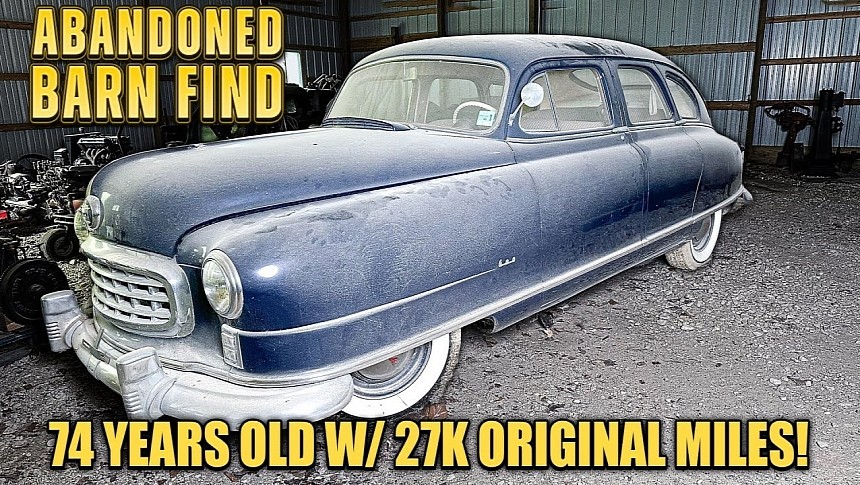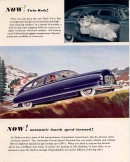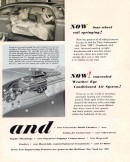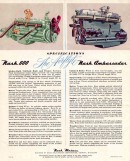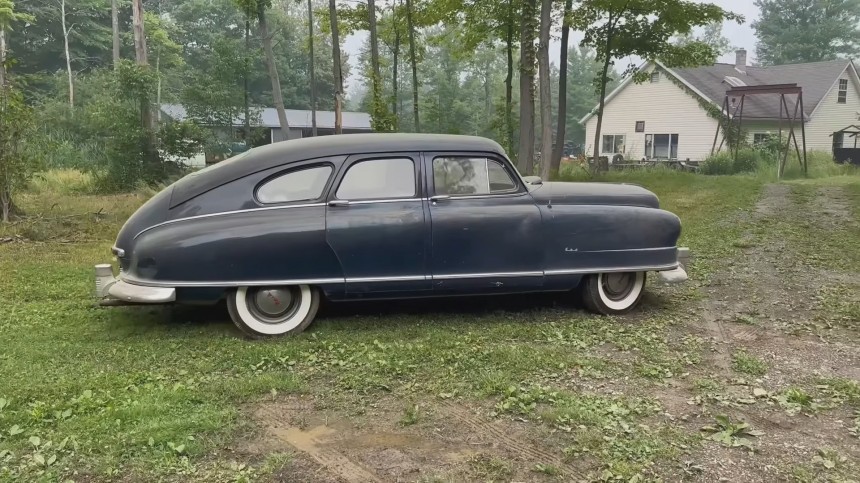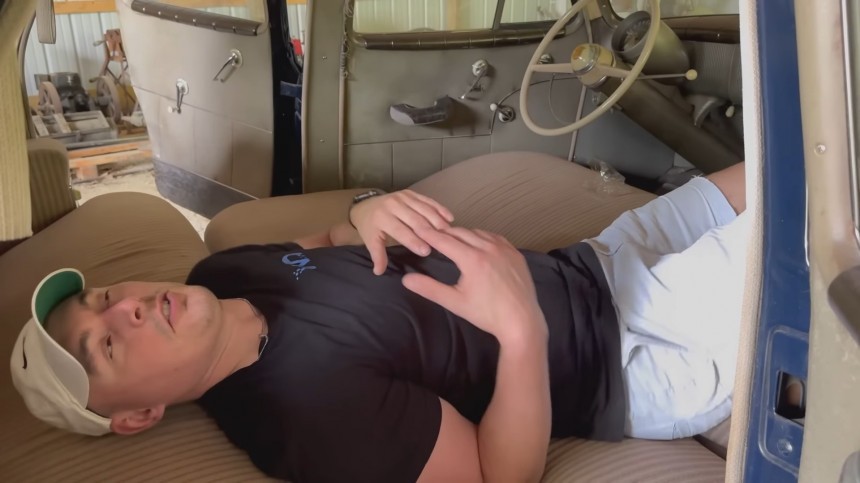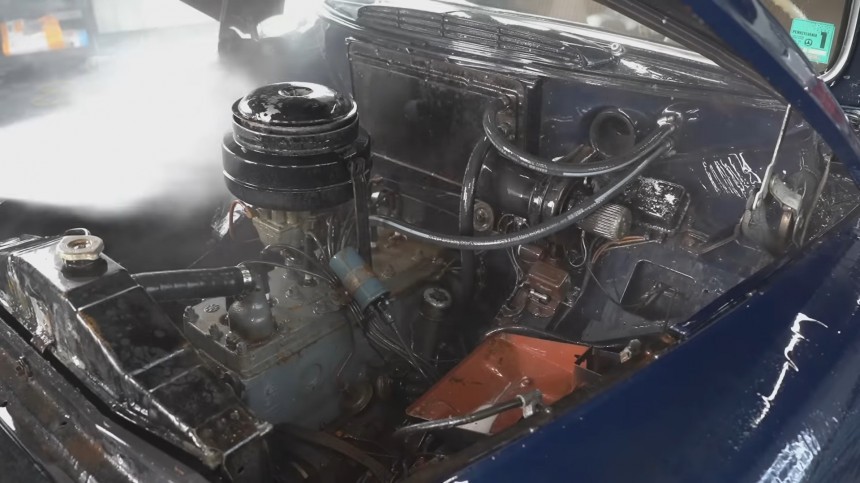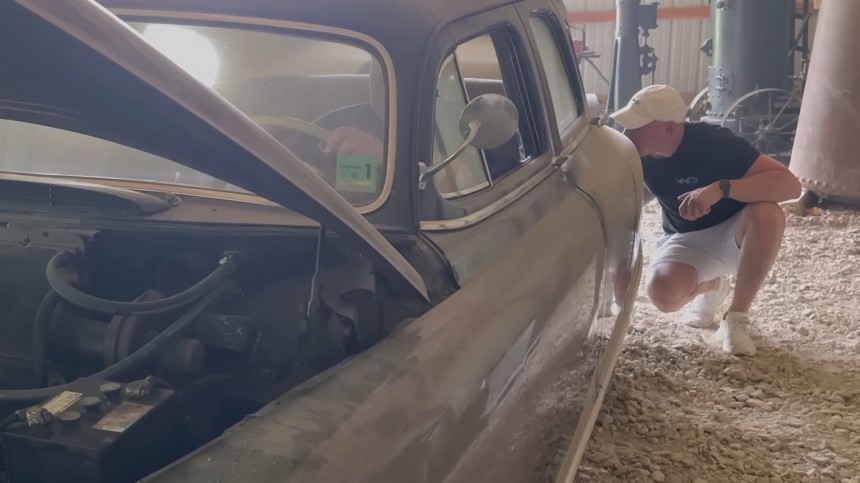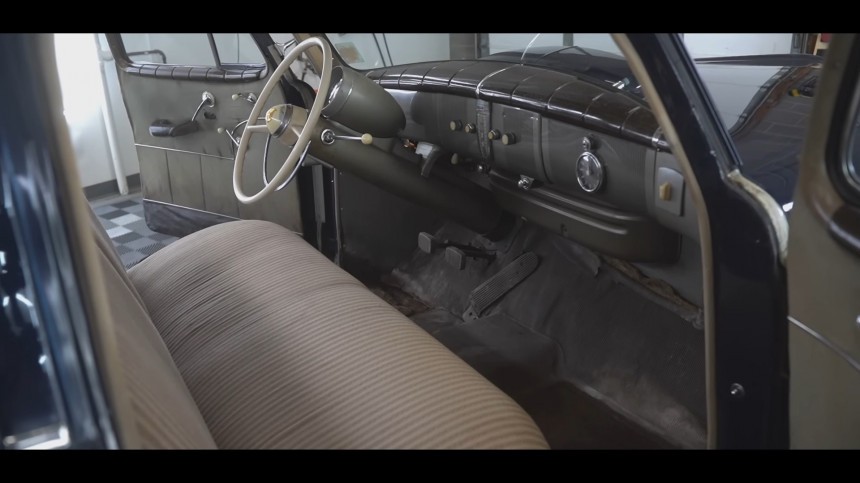Post-war America had things really going for it in the automobile-building sector, with carmakers making the most of the military production experience of 1942-1945. Consumers, too, were beginning to take more notice of a car’s technological features, and motoring companies were quick to capitalize on this aspect.
Among the famous brands from the United States of Automobile, Nash – now long dead and nearly forgotten – was, like many other small manufacturers, trying to make a living in the Detroit Big Three-dominated environment. In the years following the second world war, America was still aware of the non-corporation-dominated life, and Nash was still a popular name.
After all, the company had debuted the unibody mass production, in 1941, with the low-price “600” and was among the pioneers of wind-tunnel-studied design. This drag-avoiding approach (a technique introduced by Chrysler with their splendid Airflow in 1934) ultimately led to the company’s first new model after WWII – the 1949 AirFlyte.
Streamlined and flowy, the car proposed several wind-defying innovations and a minimalistic use of vortex-inducting protuberances on the body. For example, a hood ornament was a $9 option, but all four wheels had skirts over them as standard.
This last detail quickly landed the nickname “Bathtub” on the car, and the household reference was enforced by another unusual design feature: full-size beds in the cabin. The front seats would recline horizontally, and two brackets mounted under the rear bench would extend to support the backrests.
The result was a sleeping area large enough for two adults. (Check the video to see how the Nash turns into a camper, courtesy of the YouTubing vloggers from WD Detailing). The idea was to offer salesmen an alternative to motels or expensive accommodations while roaming the country in the Nash. Still, it had an unexpected side effect (or so the legend has it).
Back in the 50s and early 60s, when the car was still fresh and relatively commonplace among gearheads, fathers would forbid their daughters from going on dates with young men driving a Nash. (I guess this puts the phrase “baby boomer” in a whole new light).
The AirFlyte consisted of two sub-models, the 600 and the Ambassador. Each had two body styles (two- and four-door) and eight trim levels, all immediately identifiable by their unique shape. The lack of wheel arches was one, and the two-box styling was the other. The apparent lack of a trunk was the engineering result of airflow studies.
The Nash 600 was aptly named so for its manufacturer-claimed capability of traveling 600 miles (970 kilometers) with one filled-to-the-brim 20-gallon (76 liters) tank of gasoline “at average highway speed.” The gallery shows a sales flyer from 1949, advertising over 25 mpg fuel economy (roughly 9.4 liters per 100 km). Math may slightly disagree with copywriting verbiage, but the car’s overall performance was impressive.
Owing to a lower body mass than traditional body-on-frame cars, the Nash 600 could make do with a smaller engine –the inline-six flathead with 173 fuel-budget-friendly cubic inches (2.8 liters). The engine’s single barrel carburetor cracked the whip on 82 hp (83 PS), and the 138 lb-ft (187 Nm) made quick work of the 2,960 lbs (1,342 kg) Nash. The transmission was a three-speed manual with overdrive (this would explain the fuel economy claims).
The 600 Super wasn’t a small car by any standards: eighteen feet long, six-and-a-half feet wide, and five feet tall (5.10x1.97x1.6 meters). After all, fitting ten passengers at any one time was no small accomplishment. Granted, nine of those passengers were primary school children – four in the front, next to the driving mother, and the rest in the back. The advertised accommodation capacity was five adults.
The car featured in this story is a last-model-year Nash Super 600 from 1949 (the car’s final production year) that presents itself in a more than respectable condition, given its 74-year-old age. There is no rust or tear, and the interior – albeit unlawfully, but very inconspicuously, seized by rodents – is still in one piece.
The odometer reads 27,000 miles (and some change), but several viewers speculate the actual mileage is 127,000, pointing out the wear on the carpets and accelerator pedal, the stains by the door handles, and the pitting on the chrome.
Although the car has been sitting in a barn, collecting dust and serving as a residence for mice, the paint is in fantastic condition. We could suspect the vehicle has seen at least one restoration since Ike Eisenhower left office, especially since the body is speckless and the engine starts without hiccups.
About this last part: this particular Nash Super is a finicky automobile that requires extra TLC to get going – and this is no metaphor. For the engine to start, the car must be kiss-started. No type here: not kick-started, but “k-i-double-S-ed” on the fuel filler.
Not that Nash had installed some never-before-seen technology in the Airflyte – at least, not a kiss-starter – but that’s the owner’s way of building up pressure in the fuel tank to prime to pump. In all fairness, Nash adorned its cars with innovations – chief of which was the “Conditioned Air” system.
This was another world-first tech for an automobile, and Nash introduced it in cars after taking full advantage of its association with Kelvinator. The latter was a white goods producer, and refrigerators were on their offer. One thing led to another, and today we ride in climatic comfort thanks to that unlikely joint venture from eight decades ago.
Apart from this cool feature (yes, pun intended – check the brochure in the gallery to see how it worked), Nash also offered the Uniscope instrument panel mounted directly on the steering column. The rest of the dash was clean and smooth, with only a vertical radio in the center.
Coil springs on all four corners made the ride quieter and smoother, and the car felt sturdy and robust, thanks to its 8,000 electric welds used for the unibody. More than 31,000 Super 600 four-door Nashes were built in the model’s final year – the highest production yield of all body styles and trims for the Airflyte of 1949.
After all, the company had debuted the unibody mass production, in 1941, with the low-price “600” and was among the pioneers of wind-tunnel-studied design. This drag-avoiding approach (a technique introduced by Chrysler with their splendid Airflow in 1934) ultimately led to the company’s first new model after WWII – the 1949 AirFlyte.
Streamlined and flowy, the car proposed several wind-defying innovations and a minimalistic use of vortex-inducting protuberances on the body. For example, a hood ornament was a $9 option, but all four wheels had skirts over them as standard.
The result was a sleeping area large enough for two adults. (Check the video to see how the Nash turns into a camper, courtesy of the YouTubing vloggers from WD Detailing). The idea was to offer salesmen an alternative to motels or expensive accommodations while roaming the country in the Nash. Still, it had an unexpected side effect (or so the legend has it).
Back in the 50s and early 60s, when the car was still fresh and relatively commonplace among gearheads, fathers would forbid their daughters from going on dates with young men driving a Nash. (I guess this puts the phrase “baby boomer” in a whole new light).
The Nash 600 was aptly named so for its manufacturer-claimed capability of traveling 600 miles (970 kilometers) with one filled-to-the-brim 20-gallon (76 liters) tank of gasoline “at average highway speed.” The gallery shows a sales flyer from 1949, advertising over 25 mpg fuel economy (roughly 9.4 liters per 100 km). Math may slightly disagree with copywriting verbiage, but the car’s overall performance was impressive.
Owing to a lower body mass than traditional body-on-frame cars, the Nash 600 could make do with a smaller engine –the inline-six flathead with 173 fuel-budget-friendly cubic inches (2.8 liters). The engine’s single barrel carburetor cracked the whip on 82 hp (83 PS), and the 138 lb-ft (187 Nm) made quick work of the 2,960 lbs (1,342 kg) Nash. The transmission was a three-speed manual with overdrive (this would explain the fuel economy claims).
The car featured in this story is a last-model-year Nash Super 600 from 1949 (the car’s final production year) that presents itself in a more than respectable condition, given its 74-year-old age. There is no rust or tear, and the interior – albeit unlawfully, but very inconspicuously, seized by rodents – is still in one piece.
The odometer reads 27,000 miles (and some change), but several viewers speculate the actual mileage is 127,000, pointing out the wear on the carpets and accelerator pedal, the stains by the door handles, and the pitting on the chrome.
Although the car has been sitting in a barn, collecting dust and serving as a residence for mice, the paint is in fantastic condition. We could suspect the vehicle has seen at least one restoration since Ike Eisenhower left office, especially since the body is speckless and the engine starts without hiccups.
Not that Nash had installed some never-before-seen technology in the Airflyte – at least, not a kiss-starter – but that’s the owner’s way of building up pressure in the fuel tank to prime to pump. In all fairness, Nash adorned its cars with innovations – chief of which was the “Conditioned Air” system.
This was another world-first tech for an automobile, and Nash introduced it in cars after taking full advantage of its association with Kelvinator. The latter was a white goods producer, and refrigerators were on their offer. One thing led to another, and today we ride in climatic comfort thanks to that unlikely joint venture from eight decades ago.
Coil springs on all four corners made the ride quieter and smoother, and the car felt sturdy and robust, thanks to its 8,000 electric welds used for the unibody. More than 31,000 Super 600 four-door Nashes were built in the model’s final year – the highest production yield of all body styles and trims for the Airflyte of 1949.
